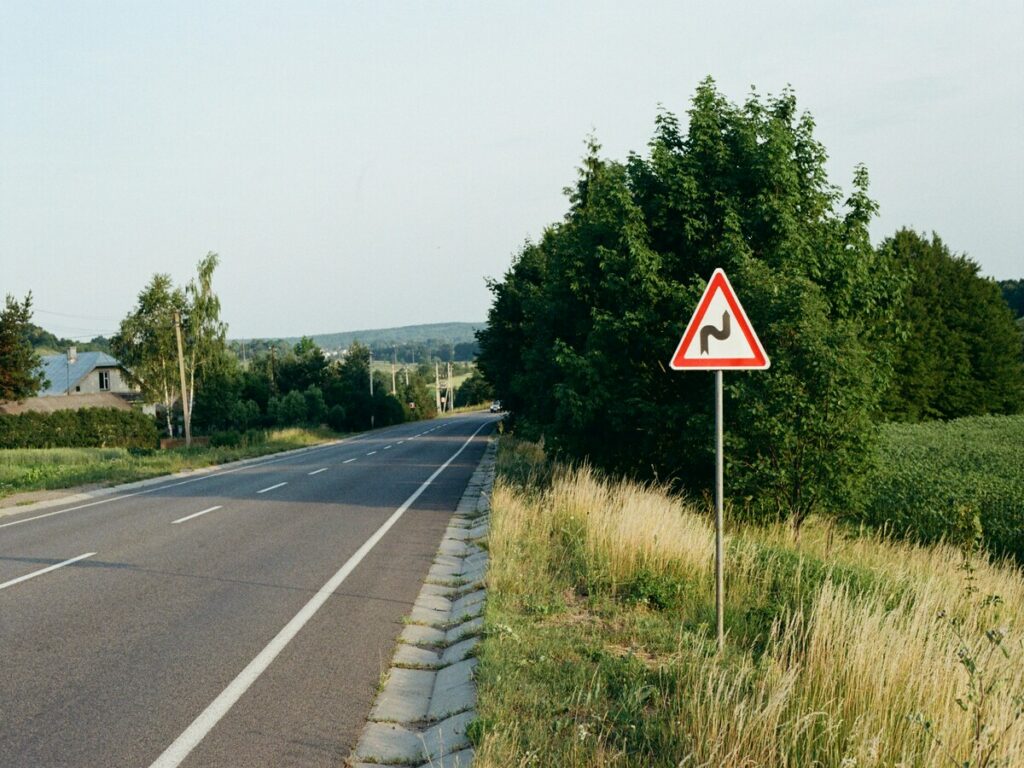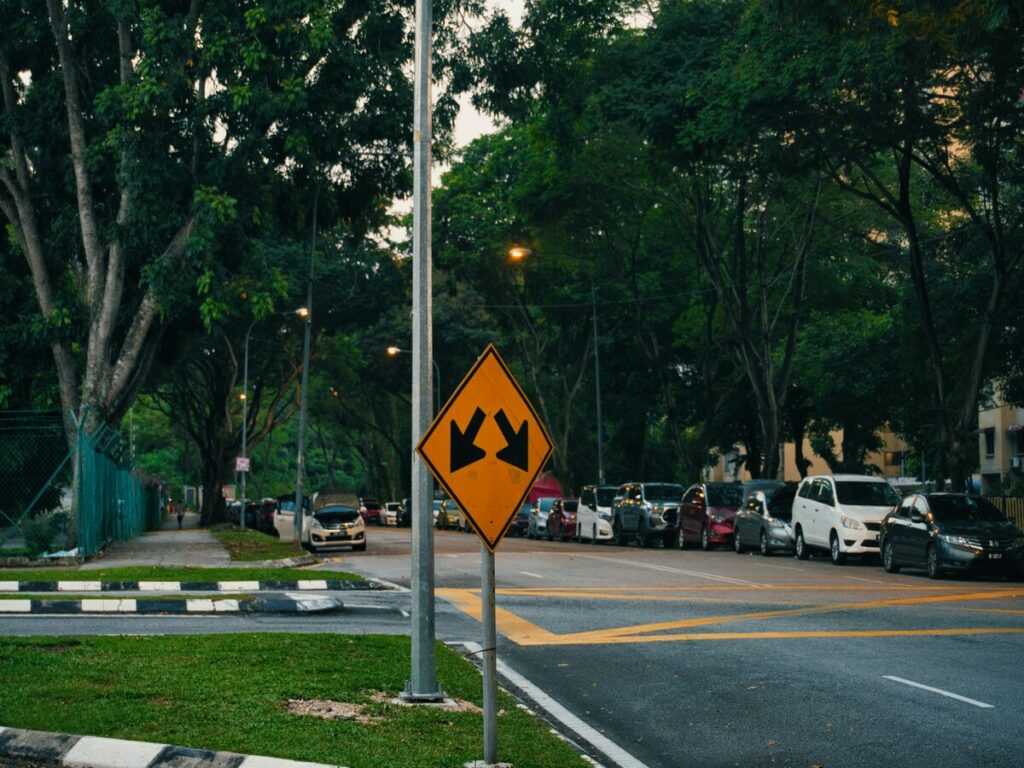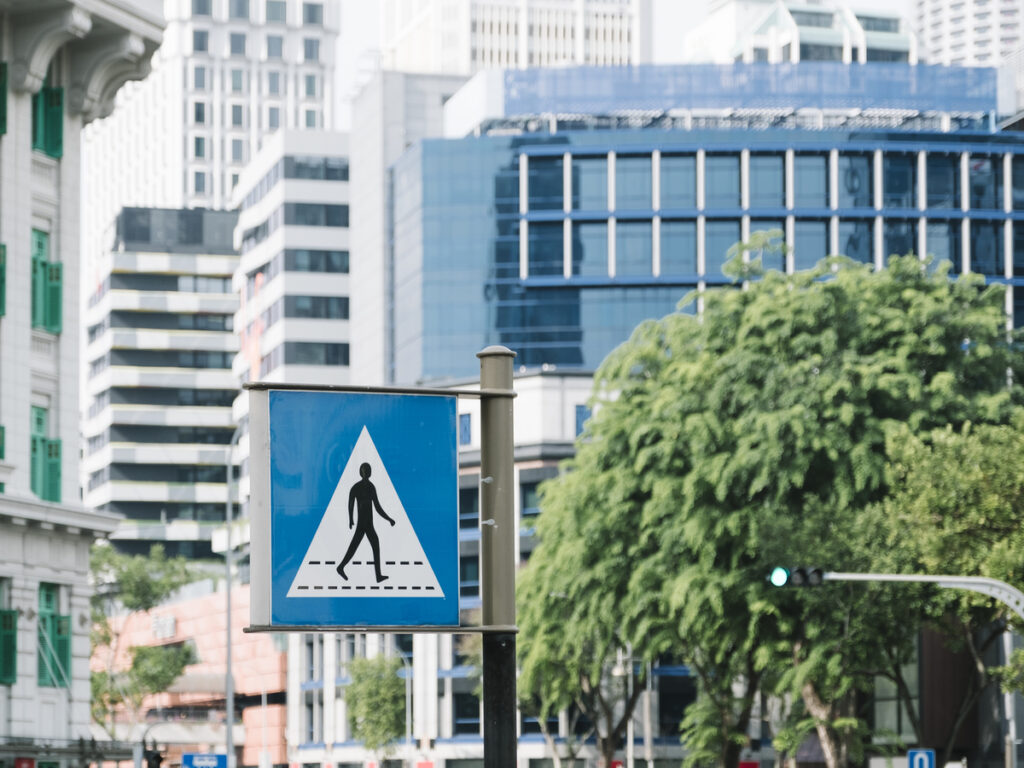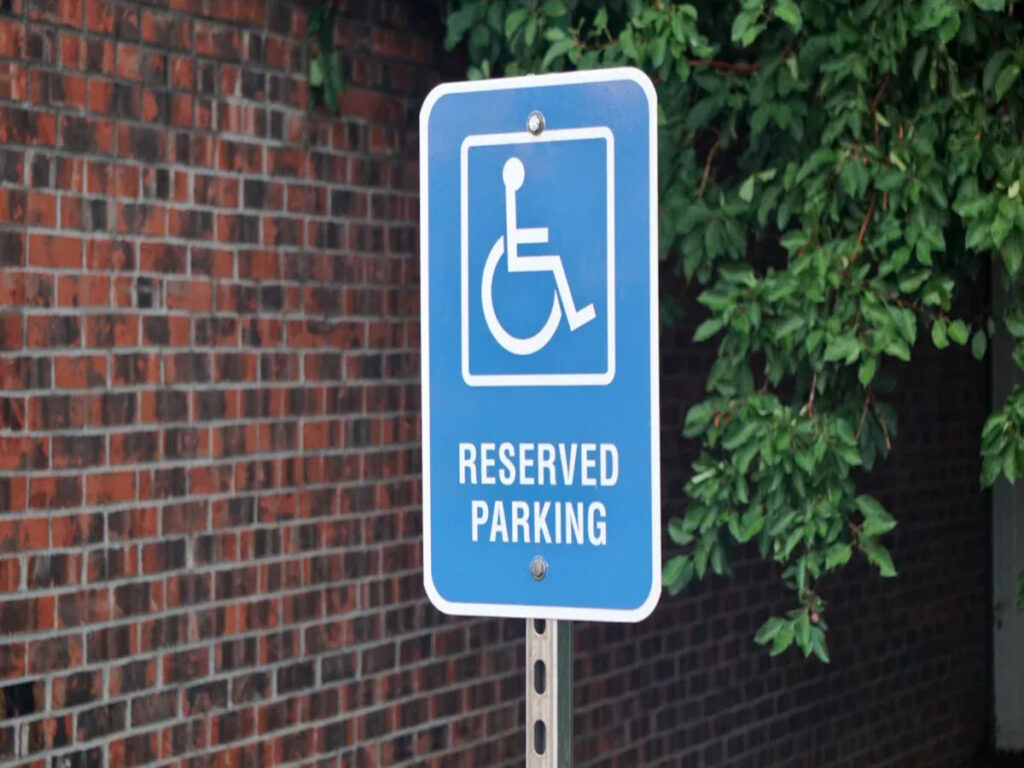
Korrosionsbeständige Beschichtungen spielen eine entscheidende Rolle bei der Verlängerung der Lebensdauer der Verkehrszeichenhardware. Diese Beschichtungen schützen Metalloberflächen vor der schädlichen Wirkung von Wasser, Salz, und raue Wetterbedingungen. Ohne entsprechende Beschichtungen, Verkehrsschilder sind anfälliger für Rost, Bruch, und frühes Scheitern. In ländlichen Gebieten, Schilder mit Schutzbeschichtung können lange halten 80 Jahre, während in tropischen Küstenregionen, Sie können bis zu funktionsfähig bleiben 50 Jahre. Langlebige Verkehrsschilder reduzieren nicht nur die Notwendigkeit häufiger Austausche, sondern tragen auch zu einer verbesserten öffentlichen Sicherheit bei. Durch die Verwendung starker Beschichtungen, Verkehrszeichen bleiben viele Jahre lang sicher und wirksam, Gewährleistung von Zuverlässigkeit und Langlebigkeit.
OPTRAFFIC Bietet hochwertige Verkehrszeichenhardware with corrosion-resistant coatings, designed to stand up to the toughest weather conditions and provide offers long-lasting performance.
Understanding Corrosion and Its Impact on Traffic Sign Hardware

What Is Corrosion and How Does It Occur
Korrosion happens when metals break down over time. This process occurs naturally and turns metal back into ore. It happens because of chemical reactions like rusting or electrochemical changes. When metal traffic signs touch water, Luft, oder Salz, corrosion starts. Im Laufe der Zeit, the metal gets weaker and forms rust or other substances.
Manchmal, galvanic corrosion happens between two different metals. Zum Beispiel, aluminum and steel can corrode faster when saltwater is present. The more active metal, called the anode, rusts quickly. The less active metal, called the cathode, stays safer. This depends on how big the metal pieces are and how well they connect.
Effects of Corrosion on Traffic Sign Hardware
Corrosion can cause serious problems for traffic signs. Rust makes metal weak and easy to break. This can lead to signposts falling or brackets snapping, which is dangerous for people.
Corrosion also makes signs harder to see. Rust spots and peeling paint can make signs unclear. This reduces their usefulness and can lead to expensive repairs or replacements. Cities may spend more money fixing damaged signs.
Environmental Factors That Accelerate Corrosion
Some weather conditions make corrosion happen faster. Humid places have more moisture, which speeds up rusting. Coastal areas with salty air and water are perfect for galvanic corrosion.
Hot and cold weather also affect corrosion. An heißen Orten, sunlight can damage coatings and expose metal. In kalten Gegenden, freezing and thawing can crack coatings, letting water in to start rusting.
Um diese Probleme zu lösen, special coatings are used. These coatings protect traffic signs from weather and help them last longer.
Types of Corrosion-Resistant Coatings for Traffic Sign Hardware
Galvanization and Zinc-Based Coatings
Galvanization is a great way to stop steel from rusting. It covers the metal with zinc, which blocks water and air. Zink rusts slower than steel, keeping it safe for years.
Hot-dip galvanization dips steel into melted zinc, making a thick coat. This strong layer works well in wet or salty places. Electro-galvanization adds a thinner coat of zinc but gives a smoother look. It’s better for areas with less wear and tear.
Thermo-diffusion coatings are even stronger than regular galvanization. They handle tough weather and make traffic signs last much longer.
| Beschichtungstyp | Rostbeständigkeit | Stärke | Dicke |
|---|---|---|---|
| Hot-dip Galvanization | Gut | Hardness ~ 50 HV | Variiert |
| Electro-galvanization | Gut | Hardness ~ 50 HV | Variiert |
| Thermo-diffusion Coatings | Am besten | Hardness up to 200 HV | Variiert |
| Cataphoretic Coatings | Bis zu 1000 H | Variiert | Variiert |
Zink coatings follow strict rules for thickness and evenness. Zum Beispiel, a hot-dip coat of 67.9µm can protect steel for 75 years in mild weather. This makes it a smart pick for city and country traffic signs.
Powder Coatings for Enhanced Durability
Powder coatings are a newer way to protect traffic signs. A dry powder is heated to form a tough, solid layer. These coatings fight rust, Kratzer, and sunlight damage, Sie für den Außenbereich hervorragend machen.
Powder coatings also keep their color and shine for years. This helps signs stay clear and easy to read, Auch bei schlechtem Wetter. Plus, they’re eco-friendly because they don’t waste much material.
These coatings work well in extreme weather. They handle freezing cold, blazing heat, and heavy rain without breaking. This toughness means less fixing and fewer costs over time.
Polymer Coatings for Chemical and Saltwater Resistance
Polymer coatings, like epoxy and polyurethane, protect against chemicals and saltwater. They create a strong shield that keeps traffic signs safe from harsh conditions.
In Küstengebieten, where salty air speeds up rust, polymer coatings work best. They stop salt from reaching the metal, helping signs last longer. These coatings are also used in boats and docks, proving they’re reliable in tough spots.
Polymer coatings are flexible too. They work in places with chemicals, like factories or icy roads treated with salt. This flexibility keeps signs from rusting and extends their lifespan.
Tipp: Think about the weather and conditions your signs face. Pick the right polymer coating for the best protection.
Advanced Nanotechnology Coatings
Nanotechnology coatings are a new way to protect traffic signs. They use tiny particles to make a strong, Schutzschicht. This layer helps signs last longer by stopping scratches and damage from weather.
A cool feature of these coatings is self-healing. If a sign gets scratched, the coating fixes itself. It fills the scratch to block water or salt from reaching the metal. This keeps signs in good shape and lowers the need for repairs.
Another great thing is how these coatings fight wear and bad weather. They protect signs from sunlight, starker Regen, und salzige Luft. This is super helpful in places near the ocean or factories. Some coatings even clean themselves by repelling dirt. Clean signs are easier to see and need less cleaning, which improves safety.
Nanotechnology coatings now work with many materials. They can be used on steel, Aluminium, and other metals. This makes them useful for all kinds of traffic signs.
These coatings also save money. Zum Beispiel, companies using anti-scratch coatings spent 22% less on repairs in two years. This shows how these coatings cut costs while keeping signs reliable.
Using nanotechnology coatings means better protection and longer-lasting signs. These new ideas help traffic signs stay strong, Auch bei hartem Wetter.
Benefits of Corrosion-Resistant Coatings for Traffic Sign Hardware

Improved Durability and Longevity
Coatings that resist rust help traffic signs last longer. They protect metal like steel and aluminum from damage. Ohne Beschichtungen, Wasser, Salz, and sunlight can weaken metal fast. Coatings block these harmful elements and keep signs strong.
Powder coatings stop signs from fading in sunlight. This keeps signs bright and easy to read for years. Speed limit signs and message boards stay clear and sturdy with this protection. Fewer replacements mean saving money and keeping roads safe.
Cost Savings Through Reduced Maintenance
Rust-proof coatings save money by lowering repair needs. Ohne Beschichtungen, signs rust, Riss, and fade quickly. Fixing or replacing them costs more over time.
Polymer coatings like epoxy work well in tough spots. They protect signs from chemicals and salty air, wodurch sie länger halten. Nanotechnology coatings also help by fixing small scratches themselves. This reduces repair costs even more.
Using strong coatings means fewer damaged signs. Im Laufe der Zeit, this saves money and keeps traffic signs working well.
Enhanced Safety and Reliability of Traffic Signs
Rust-proof coatings make traffic signs safer and more reliable. Rusty signs are hard to see and can break easily. This is dangerous for drivers and pedestrians.
Coatings keep signs bright, klar, and strong in bad weather. Powder coatings stop signs from fading in sunlight and keep poles sturdy. Polymer coatings protect signs from saltwater and chemicals in coastal areas.
Using these coatings makes roads safer and signs more dependable. Guardrails and barriers also stay strong, protecting people and cars better.
Environmental Benefits of Long-Lasting Traffic Sign Hardware
Using rust-proof coatings helps traffic signs last longer. Dies bedeutet, dass weniger Ersatz benötigt werden, weniger Abfall schaffen. Less waste means fewer old signs in landfills. It also saves resources used to make new signs. Choosing strong materials helps protect nature and reduces harm to the environment.
These coatings follow strict eco-friendly rules. Zum Beispiel, anti-UV powder coatings make signs tougher. They also create less waste when applied. The process is cleaner and safer for the planet. These coatings don’t have harmful VOCs, which keeps the air cleaner.
Rust-proof coatings also save energy. Making new signs uses a lot of energy, from mining to production. By keeping old signs in use longer, less energy is needed. This lowers pollution from factories and transportation.
Another plus is less maintenance. Coated signs need fewer repairs, so crews travel less. Fewer trips mean less fuel used and fewer emissions. Im Laufe der Zeit, this helps keep the air cleaner.
In places near oceans or factories, these coatings are even more helpful. Saltwater and chemicals can damage signs quickly. Coatings stop this damage, so signs last for many years. This reduces the need for constant replacements in tough areas.
Using rust-proof coatings is a smart, green choice. They protect signs, Ressourcen sparen, und Verschmutzung abschneiden. These coatings are perfect for projects that care about the environment.
Application and Maintenance of Corrosion-Resistant Coatings
Best Practices for Applying Coatings
To make coatings last, apply them the right way. Erste, clean the metal surface well. Get rid of dirt, Fett, and rust for a smooth start. A clean surface helps the coating stick better. Use sandblasting or chemicals to remove tough rust.
Pick the right coating for the location. Polymer coatings are great for salty coastal areas. Powder coatings work well in places with chemicals. Apply the coating evenly by spraying, dipping, oder Bürsten. Follow the maker’s directions for thickness and drying time.
Tipp: Apply coatings in clean, dry spaces. Avoid humid or dusty areas to prevent flaws.
Routine Maintenance to Maximize Durability
Taking care of coatings keeps them working longer. Check signs often for scratches, Peeling, oder Rost. Fix damage quickly to stop rust from spreading.
Wash signs with mild soap and water to clean off dirt. Don’t use strong chemicals that can harm the coating. In polluted or salty areas, clean signs more often.
If the coating wears down, reapply it. Adding a new layer protects the sign and makes it last longer. Regular care keeps signs safe and useful for many years.
Factors to Consider for Long-Term Effectiveness
Some things affect how long coatings last. The environment is a big factor. Signs near the ocean or factories need stronger coatings to handle salt and chemicals.
The quality of the coating is also important. Better coatings last longer and protect more. Pick coatings that meet industry rules for thickness and sticking power.
Think about the metal used for the sign too. Steel and aluminum react differently to rust. Match the coating to the metal for the best results. By considering these things, coatings can stay strong over time.
Advancements in Corrosion-Resistant Coating Technologies
Innovations in Nanotechnology for Traffic Sign Hardware
Nanotechnology has changed how traffic signs fight rust. These coatings use tiny particles to protect metal from water, Salz, und Chemikalien. They also stop scratches and damage, helping signs last longer.
A cool feature of these coatings is self-healing. Wenn zerkratzt, the coating fixes itself by filling the gap. This blocks water and salt, stopping rust from starting. This is very helpful in places with bad weather or busy roads.
These coatings also keep dirt off signs, making them cleaner. Clean signs are easier to read, which keeps drivers safe. Nanotechnology works on many materials like steel and aluminum, so it fits all kinds of signs.
Eco-Friendly and Sustainable Coating Solutions
Eco-friendly coatings are better for the planet. They don’t use harmful chemicals like VOCs that pollute the air. Choosing these coatings helps protect nature while keeping signs strong.
Powder coatings are a good example of eco-friendly options. They create little waste and don’t release toxic fumes. This makes them safer for workers and the environment. Sie dauern auch länger, Es werden so weniger Ersatz benötigt.
Some coatings even use materials from plants. These new coatings match green goals, making them great for cities that care about the environment.
Enhanced Performance in Extreme Environments
Signs in tough places need extra protection. Heiß, kalt, or salty conditions can cause rust faster. Special coatings are made to handle these challenges and keep signs working.
Polymer coatings like epoxy are great for coastal areas with salty air. They form a strong shield that stops salt from damaging metal. In cold places, powder coatings don’t crack when it freezes and thaws.
Nanotechnology coatings are super strong. They protect signs from sunlight and heavy rain. This keeps signs bright and easy to read in bad weather. Using these coatings makes signs last longer and saves money on repairs.
Coatings that stop rust help protect traffic signs from damage. Picking the right coating makes signs last longer and work better. This lowers repair costs and keeps roads safer. Taking care of signs and applying coatings correctly helps them stay strong. New coating ideas give even better protection and are good for the planet. These coatings make signs tougher and help keep traffic systems working well.
FAQ
1. How do corrosion-resistant coatings protect traffic sign hardware?
These coatings form a shield that stops water, Salz, and chemicals from touching the metal. This keeps the metal from rusting or breaking down, so it stays strong and works well for a long time.
Tipp: Pick coatings based on your area, like polymer for salty places or powder for tough weather.
2. What is the best coating for traffic signs in coastal areas?
Polymer coatings, like epoxy or polyurethane, are best for coastal areas. They block salty air and water, giving strong and lasting protection.
Notiz: These coatings are also used on boats, showing they work well in rough conditions.
3. Can corrosion-resistant coatings reduce maintenance costs?
Ja, they help save money by stopping rust and damage. Zeichen dauern länger, so you don’t need to fix or replace them often.
| Nutzen | Auswirkungen |
|---|---|
| Fewer Repairs | Spart Geld |
| Längere Lebensdauer | Weniger Ersatz |
4. Are eco-friendly coatings available for traffic signs?
Ja, eco-friendly coatings like powder coatings exist. They make less waste and don’t use harmful chemicals. These coatings protect signs and the planet at the same time.
Alarm: Always check labels to make sure the coating is eco-friendly.
5. How often should traffic signs be inspected for coating damage?
Check signs every six months for scratches, Peeling, oder Rost. Finding problems early stops bigger damage and helps the coating last longer.
Tipp: In places with salty air, check signs more often to keep them safe.



















